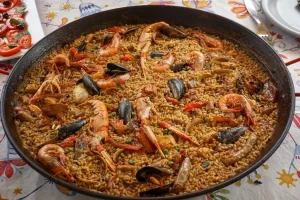People travel to different countries for various reasons: visiting cultural places, beach holidays, hiking in the mountains and having noisy parties in the best nightclubs in the city. Culinary curiosity is one of those reasons and Spain is one of the countries that attract these visitors the most, especially with a long list of Traditional Spanish Dishes.
Spain cultivates the benefits of having shores to the Mediterranean, by including a high variety of vegetable and seafood dishes in its cuisine. In addition, the tapas culture is one of the most interesting ways to dine, which is what attracts most food-loving tourists.
In this article, you will find the 10 Traditional Spanish Dishes that have deep roots in Spanish history, as well as its kitchens.
1. Tortilla (Spanish Omelet)
The Tortilla is one of the most known Traditional Spanish Dishes. According to legends, a poor resident of Navarre cooked for a Spanish General a potato omelet out of all the products that she could find in the house. The assortment was not rich: potatoes, onions, and a few eggs. Even if it wasn’t a high quality option, the General liked it . A simple recipe soon became very popular.
The beauty of Tortilla is that it can be eaten when and how you prefer. Spanish people tend to serve it at lunch or dinner, but some may even eat it as breakfast! Served hot or cold, this dish is always a good choice.
Nowadays, you can enjoy a traditional tortilla in any Spanish city — from Seville to Barcelona. The dish found the favor of most people, that even the world-famous chef Ferran Adria offers in his menu a recipe for a potato chip tortilla. You can try the classic version of the Spanish potato omelet in any restaurant in the country.
The popularity of such an easy and poor dish is unmatched and it would be a pity not to taste it while traveling Spain. Even so, there are lots of variations: Madrid has the “Tortilla Brava” cooked with a spicy sauce and maybe a little bit smaller than the original; There’s also the “Tortilla Paisana” that includes chorizo, red pepper and peas; Even more with the “Tortilla Bocadillo”, as sort of sandwiches with tortilla and other ingredients.
As shown, there are plenty of possibilities to enjoy your favorite version of the tortilla, including vegetarians and vegans!

2. Gazpacho
During the summer, especially in the south of Spain, there is no better escape from the heat than a well-chilled Gazpacho tomato soup. In fact, this dish is really popular in the Andalusia region, since this is a cold soup and can be enjoyed even under the hot sun. Today, this traditional Spanish dish is one of the most famous tomato soups in the world.
History sees this recipe made by low-income individuals as a solution against food waste, as it was a clever way to recover bread that was already too hard to eat normally.
The basic ingredients for Gazpacho are: peppers, tomatoes, cucumbers, onions, garlic, olive oil, a bit of vinegar and stale bread The addition of tomatoes and peppers it’s recent, around the XIX century. That makes it perfect for a rich meal in the hot waves of Spain, giving the opportunity to vegetarians and vegans to try it.
Here’s how to make this refreshing soup:
Start by putting all the main ingredients (such as tomatoes, onions, peppers, cucumbers, garlic, etc.) in a blender and use high speed in order to make it smooth. While it’s starting to get smoother, add some vinegar and two teaspoons of salt. After blending it all a little, it’s time for the olive oil. If the mixture looks watery, try to add more to it. Using a strainer, transfer the liquid into a preferably glass bowl and let it rest in a cold place overnight. When the moment of serving the Gazpacho comes, adjust the seasoning with salt and/or vinegar and add olive oil on top. Now, it’s time to enjoy one of the most Traditional Spanish Dishes.
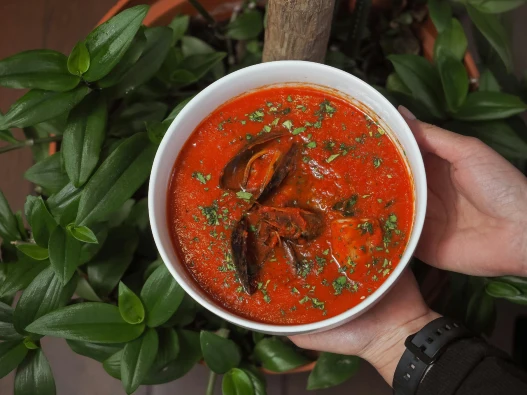
3. Ajoblanco
Ajoblanco is another dish that is really close to Gaspacho in nature, but tastes totally different. This renowned cold dish is originally from Malaga and very famous in Andalucia. This cold soup it’s made out of bread, smashed almonds, garlic, olive oil and water. It’s followed by grapes and melon. The reminiscence to the Gazpacho it’s clear but the flavor it’s totally different.
Since it’s close to the Gazpacho. Ajoblanco it’s most eaten during the summer, being that this dish is served cold and can provide relief against the great hotness of Spanish summer.
It may not be that much appealing at the beginning but it’s sure worth a try as it might surprise you with that peculiar taste and style.
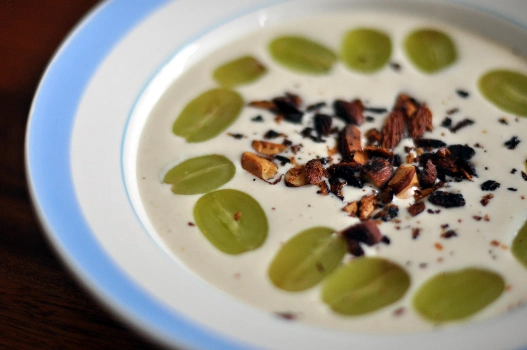
4. Paella
Paella is probably one of the famous Traditional Spanish Dishes there is, with its irresistible look and its unique taste. Everyone coming to Spain would have probably eaten at least one during their journey, if not even more.
This historical plate has its roots in the Valencian Community then wide spreaded throughout the entire Spain. Paella was born as a dish to not waste food, due to the fact that the main ingredients are: rice, browning of marinated meat, chicken and/or rabbit, green vegetables, tomatoes, peppers, beans and spices.
The most popular variation must be the one with seafood called “Paella de marisco”, that switches the meat with the fish, such as shellfish and molluscs, in a bed of shellfish stock. But does that mean that vegetarians can’t eat Paella? Absolutely not, as Spain also made a version for people that don’t eat meat and fish.
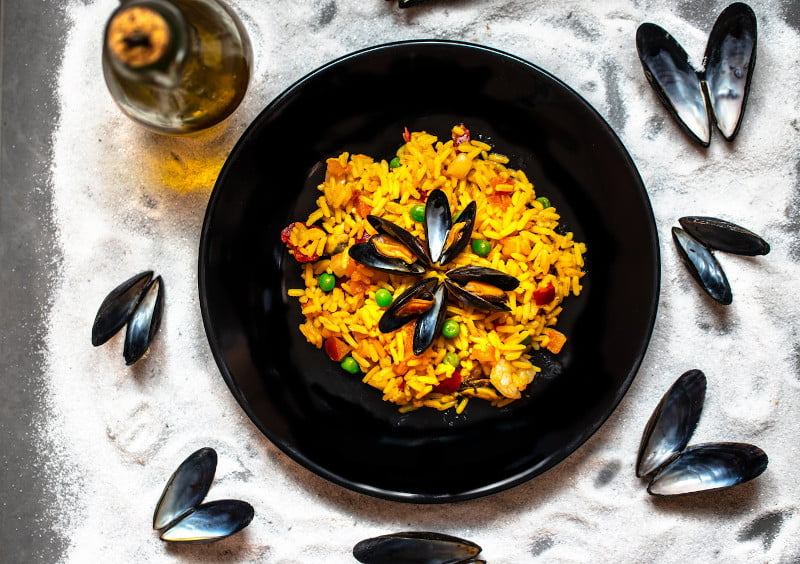
5. Tapas and Pintxos
Following the Traditional Spanish Dishes, Tapas and Pintxos are something that always come to mind when thinking about food in Spain. The idea of taking your time by drinking and having something to eat, while having nice conversations with your friends, it’s an unmatched feeling.
Legends say that in the XIX century, an innkeeper had the idea to cover his glass of wine with a piece of ham, due to the flies attracted by the sweetness of it. From the verb “tapar”, to tap, the idea of “tapas”. Another suggests that King Philip III of Spain, in order to prevent the ill use of alcohol, forced the owners of inns to serve free food as appetizers.
But what is the difference between Tapas and Pintxos? It’s better to be specific. Tapas are probably more common and their name comes from the Castilian language, while Pintxos comes from the Basque area. Of course the differences don’t end here.
Tapas are mini appetizers usually free-served to better enjoy the drink; in this perspective, the sizes have to be small and various. Pintxos are more “generous” and are seen as mini portions of bigger dishes, so are also crossed by a long stick.
Ingredients are multiple: patatas bravas, jamón ibérico, croquetas, ensalada rusa, tortillas, chorizo and more. Everyone can choose the perfect tapa or pintxo for them! If you want to get to know the taps culture in more detail, try to join a tapas tour!

6. Cuttlefish Ink
Cuttlefish ink spilling over a plate may at first confuse an unprepared tourist. But once you try this unusual dish, all fears will disappear. In the process of preparing cuttlefish, as a rule, the Spaniards use the ink for its unique taste and artificial ones for color intensity.
Onion, garlic, parsley, cayenne pepper, and the obligatory glass of wine add piquancy to the dish. If you are a lover of fish, that is something that you don’t want to miss and something that, maybe, it’s hard to find somewhere else.

7. Horse Mackerel with Chakoli from the Basque Country
The pride of Basque cuisine is dry white wine chakoli, which is often used in the preparation of traditional dishes of the Basque Country. One of them is a Horse Mackerel with Chakoli.
Spaniards usually cook fish in a saucepan, adding tomatoes, onions, carrots, leeks, garlic, butter, and, of course, a glass of chacoli. You can try the perfect Basque Horse Mackerel with Chacoli in the restaurants of Bilbao and San Sebastian.

8. Catalan eggplant with pepper
Escalivada, also known as the catalan eggplant, is such a popular appetizer in Catalogna, Valencia, Murcia and Aragona, made out of smoked grilled vegetables . Even the name comes from the way of preparing those vegetables, as in Catalan the word “escalivar” means “to cook in ashes”, referring to the traditional way of preparing food with fire generated by wood.
To prepare the Catalan Eggplant with Red Pepper, the Spaniards keep the vegetables over an open fire or they roast them on the grill until the skin turns black. Then they cover it all with a plate and wait for them to cool, after which the eggplants and peppers are peeled and cut into strips.
In most places, the vegetables are complemented with toasted bread soaked in tomato juice and oil, anchovies and onions and, sometimes, even tuna. Be sure to order Catalan eggplant with red pepper whenever you get the chance!
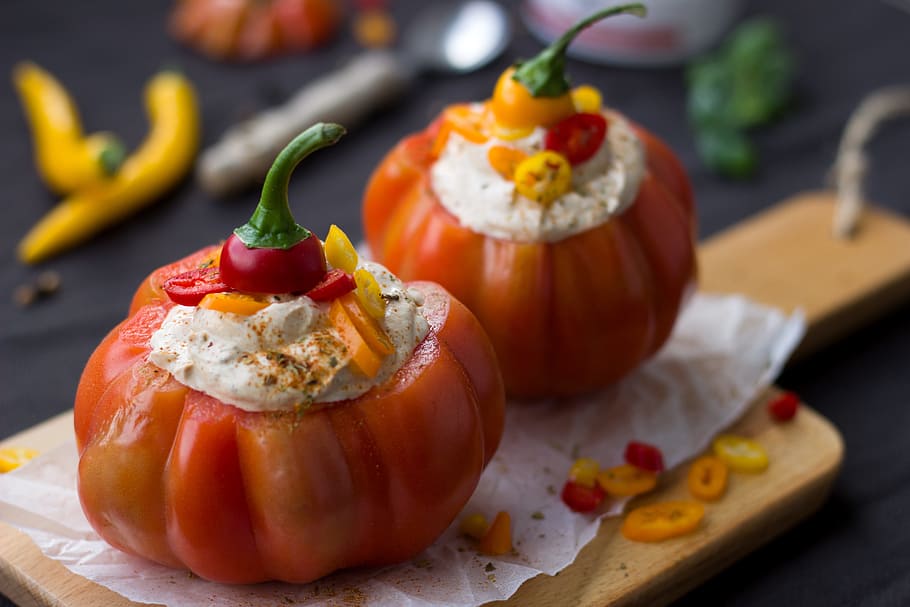
9. Tarta de Santiago
We now switch to the dessert part of our list. This is a Galician recipe with an unknown history. Given its place in time, it is believed that this cake was not made for poor people as, during the Middle-age, almonds were quite expensive. The first known moment in which this dessert was served was in 1577 at the University of Santiago, what was actually called “Tarta real” and we now know as “Santiago”.
The recipe for this dessert with a characteristic nutty taste has been known since the XVI century. The traditional Galician cake “Santiago” is made from flour, butter, almonds, sugar, eggs, and lemons. Spanish people decorate the cake with a sprinkle of powdered sugar in the form of a Santiago cross using a special stencil.
The particular design is given by the cross, which gives it a particular style, made by José Mora, the founder of “Casa Mora” in 1924, gaining great favor.
A perfect addition to the dessert will be a glass of fine Galician wine Liquor Regueiro.

10. Churros
Following the “sweet side” of Spain, Churros can’t be excluded, as this sweet and long pastry is now a Spanish symbol all around the world. The origin of Churros is debated, with some saying that they might come from China and modified by the Portugueses. But most of the historians believe that Spain is their homeland.
Apparently, this dessert was originated by the need of nomadic shepherds allocated Iberic Peninsula to have bread, which was only available in cities out of their reach. The idea was to create a dough easy to cook in a pan. The name churros may come from a race of sheeps that have their horns shaped as the dessert.
The ingredients of Churros are flour, water and salt and they are usually dipped in hot chocolate and are usually consumed as breakfast or on Sundays. Now it’s common to find them on stands across big streets, squares and theme parks. Plus, it’s a must during “ferias”.
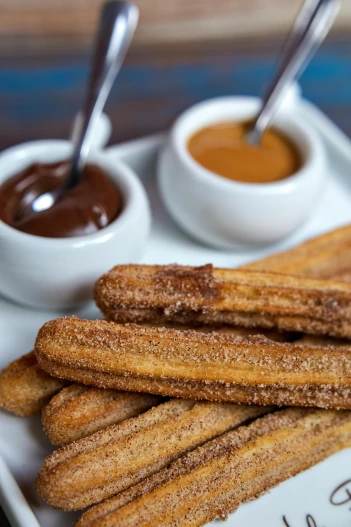
With our list we tried to highlight some of the Traditional Spanish Dishes that this beautiful country has to offer. Naturally, we suggest you go and taste as many plates as possible and try to discover even more. Spain it’s not only about tradition but even modern cuisine could be something worth trying while you plan your activities in the country.
The best idea could be to try our Tapas Tour in Granada or Malaga, as you could test small snacks but big in flavor, as tapas are a little appetizer for what Spain has to offer. So, come, eat and have fun with us!






